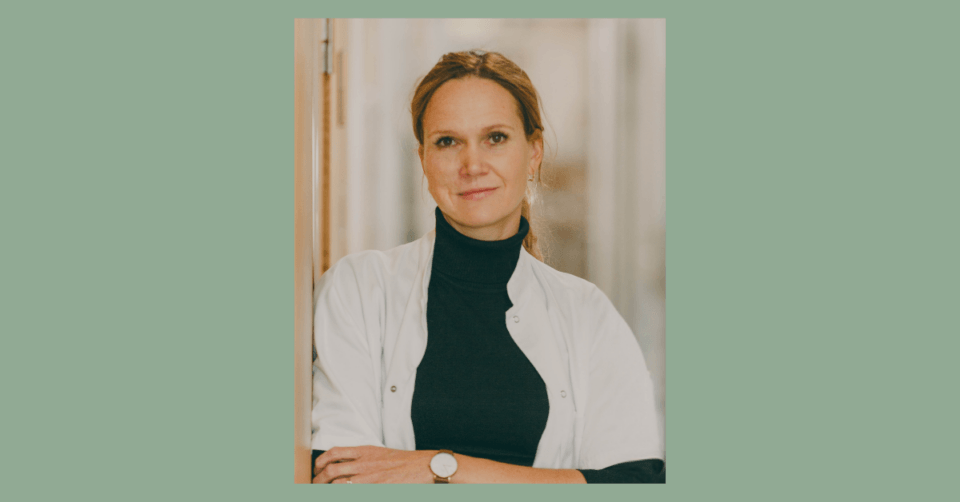4 November 2024
Stinne Ravn Greisen, a Medical Doctor and Assistant Professor, is among the four talented skin researchers to receive a LEO Foundation Dr Abildgaard Fellowship of DKK 12 million. With her research, Stinne Ravn Greisen will explore and hopefully improve the treatment of skin fibrosis – a challenging condition lacking both a cure and effective treatment options.
Assistant Professor Stinne Ravn Greisen from the Department of Biomedicine at Aarhus University is one of four Dr Abildgaard Fellows of 2024. With a grant of DKK 12 million, this fellowship is a milestone in Stinne Ravn Greisen’s career that will allow her to fully establish her own research group.
With the resources and support from the LEO Foundation, Stinne Ravn Greisen can push her research on skin fibrosis to the next level by unraveling the complex interactions between immune cells and fibrosis development in hopes of identifying new treatment targets for this debilitating condition.
“I am very grateful for the support from the LEO Foundation Dr Abildgaard Fellowship. This fellowship will allow me to grow as a group leader and researcher and drive my research to the next level, hopefully establishing new treatments for skin fibrosis, which is a very challenging condition for those affected,” Stinne Ravn Greisen says.
Stinne Ravn Greisen’s fellowship is granted as a part of the LEO Foundation’s Dr Abildgaard Fellowships 2024 research theme: Advanced Therapeutics Research in Skin Diseases.
Breaking down fibrosis
The heart of Stinne Ravn Greisen’s research lies in exploring immune regulatory pathways, particularly the PD-1 signaling pathway, to understand its role in the development of skin fibrosis. This pathway, already targeted in cancer and rheumatoid arthritis treatments, may hold the key to limiting fibrosis. Her research will investigate how immune cells interact with the cells that produce fibrotic proteins in conditions like scleroderma and keloid scarring.
Skin fibrosis leads to thick, stiff skin with a limited barrier function, increasing the risk of infections, pain, and reduced mobility. Believing that immune regulatory pathways play a central role in fibrosis development, Stinne Ravn Greisen’s seeks to advance our understanding based on three focus areas:
- Investigating fibrosis in skin samples from patients with scleroderma, keloid scars, and healthy volunteers to understand how immune pathways influence the formation of fibrotic tissue.
- Developing a skin model to test new treatment options and study how immune cells function in complex environments.
- Using a mouse model to explore the development of skin fibrosis and evaluate the effectiveness of potential treatments.
If successful, this research could offer insights into treatments not only for skin but potentially other organs affected by fibrosis.
Research journey from Denmark to USA
Stinne Ravn Greisen’s research journey began during her undergraduate studies, where she first became fascinated by the immune system, focusing on the role of PD-1 in rheumatoid arthritis. Her PhD research allowed her to work with some of the world’s top medical scientists at Harvard University, further solidifying her passion for immunology. After gaining valuable clinical experience, Stinne Ravn Greisen continued her postdoctoral research at Aarhus University and also benefited from a productive research stay at Weill Cornell University in New York.
Reflecting on her journey, Stinne Ravn Greisen shares:
“Since the last part of my postdoc, I have been very happy to supervise students and lead my own projects from start to finish. I have continued my clinical work alongside my research, providing important insights into how diseases affect the lives of patients. I hope to find a treatment for skin fibrosis because no cure is available, and treatment options are limited. A better treatment would benefit both patients with the rare systemic disease known as scleroderma and those with the more common keloid scarring.”
The person behind the researcher
Outside her research, Stinne Ravn Greisen enjoys family life just outside Aarhus, where she lives with her husband and two kids. As a formerly competitive horse rider, she still enjoys spending her evenings with her horse, finding a balance between her professional and personal passions.
Looking ahead, Stinne Ravn Greisen says that teaching and mentoring future doctors and researchers remain central to her work, alongside her research career.
“I want to foster a research group that works as a team and values collaboration, while also supporting each individual to thrive and develop their talent. This way, my research group will balance working toward a common goal while still giving the individual member the space to develop their own ideas,” she says.
